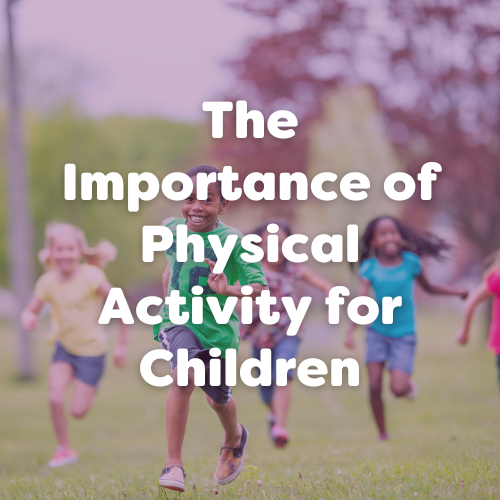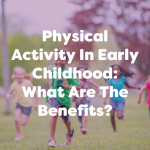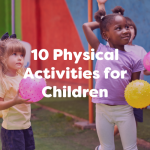Hop, skip, jump…it’s time to get the kids active!
How physically active is your child? In a digital world where children are spending more and more time looking at screens and less time playing outdoors, the problem of childhood obesity is becoming a growing concern in the UK. It is therefore extremely important to encourage a healthy and active lifestyle from a young age. In this blog, we cover the benefits of physical play for children and go over how much physical activity they should be getting.

What is considered a good amount of Physical Activity?
The chief medical officer guidelines recommend that children between 5-18 years old should be physically active for at least 60 minutes every day! This refers to moderate-vigorous intensity physical activity, from light cycling on a bike to swimming laps in a pool. Primary school is an ideal setting for engaging children in daily exercise and teaching them how to adopt and maintain a healthy active lifestyle.
How much physical activity should children do in school?
It is suggested that children achieve at least 30 minutes of moderate to vigorous activity in school and at least 30 minutes outside of school. With children spending most of their week in school, it is crucial that schools and teachers play an active role in promoting a healthy lifestyle. This should be done by giving pupils plenty of opportunities to be physically active during school time. To encourage all children into being physically active, it is important to offer an array of different activities and sports.
The importance of physical play & activity
Physical activity has countless health benefits for children! Not only does exercise improve a child’s overall health and fitness, but it can also help to improve their mental health and cognitive development as well.
Here are some of the key benefits of physical play for children:
- Builds confidence and improves social skills
- Gives children the opportunity to learn new skills and teaches them important life skills
- Strengthens muscles and bones
- Helps to develop coordination
- Enhances concentration and learning, which increases productivity and success
- Makes children feel good and elevates their mood
- Inspires positivity and encourages tolerance
- Helps to relieve stress and maintain mental and emotional wellbeing
- Improves sleep and energy levels
- Reduces the risk of morbidity and mortality from chronic non-communicable diseases
- Improves overall health and fitness and helps children maintain a healthy weight to prevent childhood obesity
To dig deeper into the benefits of physical activity for mental development in children, read more here: Benefits of Physical Activity for Mental Development.
Are you kitted-out with the essential equipment and resources for PE and sports?
Why not explore our extensive range of children’s PE & Sports Equipment, activity kits or our physical development resources to enhance your primary school’s resources? Simultaneously, to get a better idea of what PE equipment you should get first, have a look at our physical education equipment list which covers the top 10 resources you need to kickstart your physical activites.






